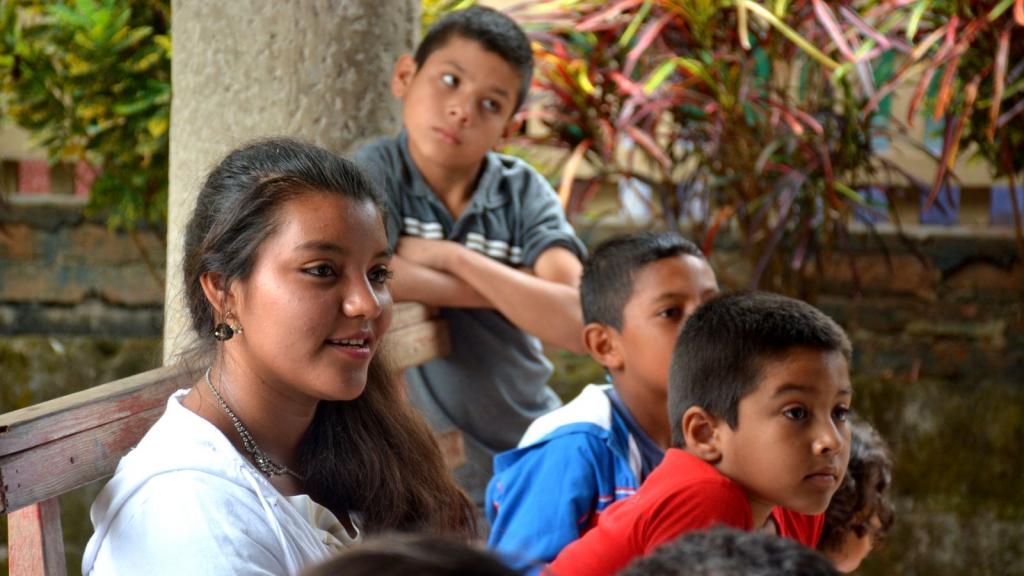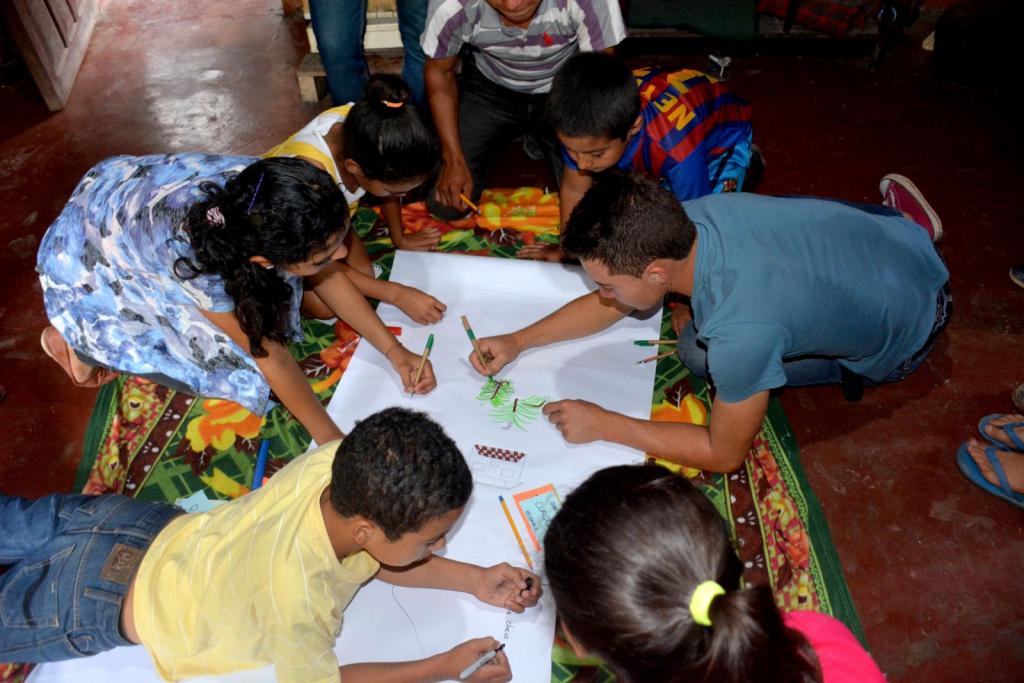Learning about climate change and ICTs at Santa Rita Climate-Smart Village
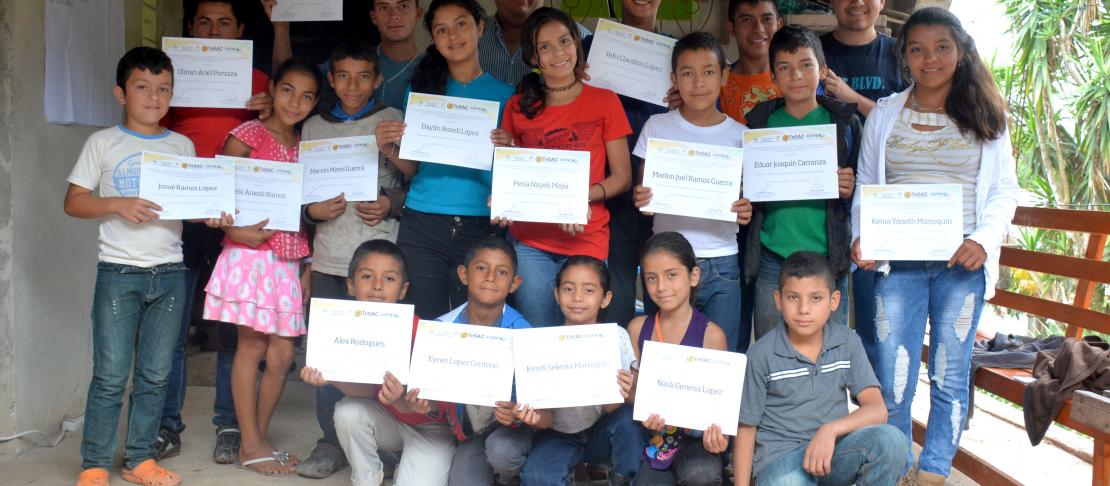
A group of young Hondurans participated in the training on climate change and communication tools at Santa Rita Climate-Smart Village; this is what we learned and what we want to do in the future.
In Tierra Fría Primera, the village wher I am from, a three-day training course was held in which 12 'chavos' (common term for young people) between 12 and 18 learned about climate change, photography and videos. This training took place in our community because Tierra Fría Primera belongs to the Climate-Smart Village (CSV) of Santa Rita, Copán in Honduras.
My colleagues and I put a lot of attention to learn how to use the cameras. Photo: Yefri López
At the beginning of the training, our tutor taught us how to use a camera correctly; we learned what the elements are to take a good photograph, like the diaphragm, shutter speed and sensitivity. With these three key elements, we were able to take good shots. We also learned the different shots to take a photograph, such as the long shot, medium shot, close-up, among others.
We were able to apply these concepts with 'María Paula' and 'María Alejandra' who were not girls, but the names of the digital SLR cameras that we used during the training. With them, we took many photographs by moving the camera settings, to understand how they influenced the quality of the photos we took.
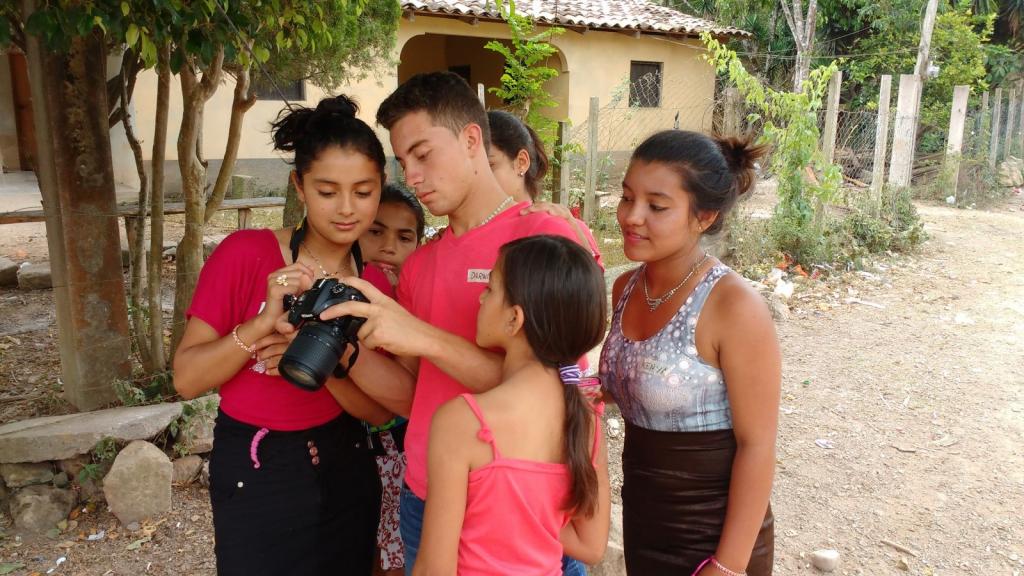
The teacher appointed me to explain to my classmates how to do the practical exercises. Photo: J. L. Urrea (CCAFS)
We also performed a fun exercise called 'paint with light' in which we locked ourselves in a very dark room and then with a flashlight, we made figures and shapes in the air by moving the flashlight, all this while the camera took a fifteen-second exposure photo. I wrote my name and my friends made all kinds of fun shapes with their cell phone's flashlights.
During the exercise of 'painting with light' we applied what we had learned in the training: closing the diaphragm as much as possible and lowering the ISO sensitivity to the minimum, since we were not in a totally dark room, so we had to compensate for the little light that filtered through the sides of the room, since the shutter speed was set to fifteen seconds.
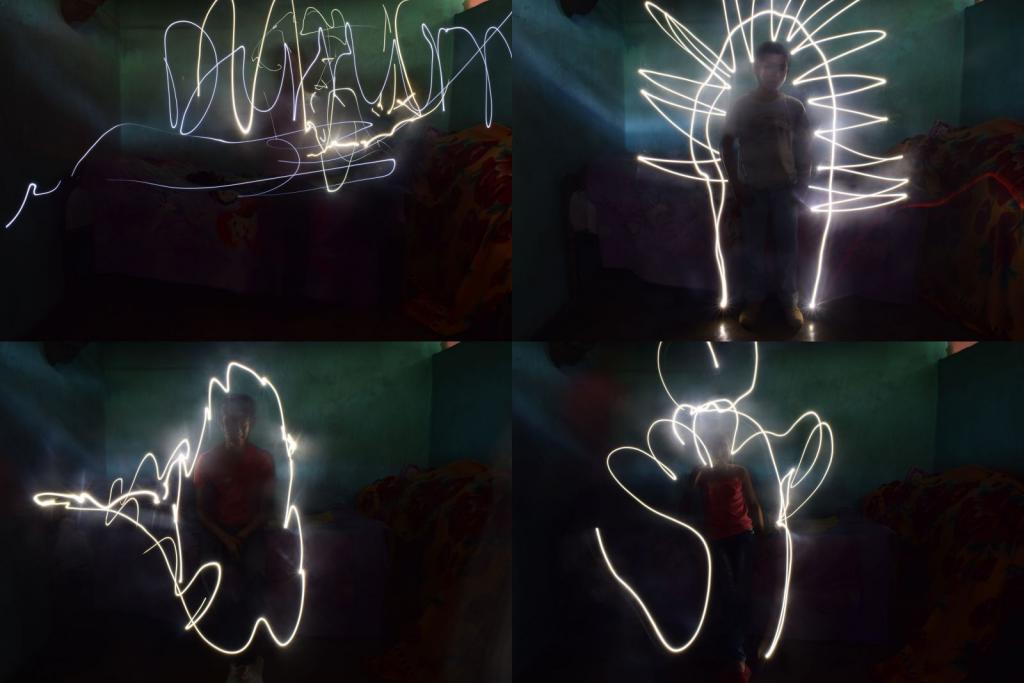
Some of the 'paint with light' exercises that we did with manipulating exposure time. Photos: training participants
After learning these basic photography concepts, our coordinator taught us how to make a video screenplay and then proposed to make a video about our community. To do this, we started doing the scripts in posters that were divided into three very important parts that are: video, scene and audio. The idea was that we proposed three different scripts, and for this we divided into three groups, each with a name: the other groups were called 'The Golden Hawks' and 'The Creative ones'; our group was called 'The Explorers'.
'The Explorers' creating the script for the video of our village. Photo: Y. Lopez
After making these posters, we present them to our classmates and then made a script that collects everyone's ideas. That's why we decided between all scenes proposed, which ones were to be the scenes that we wanted to film. When we had the definitive script ready, the next task was distributing the functions during the shooting: I was director, actor, sound manager and assistant. Like the rest of my friends we rotated between the functions, and other children of the community who came to participate in the workshop as guests.
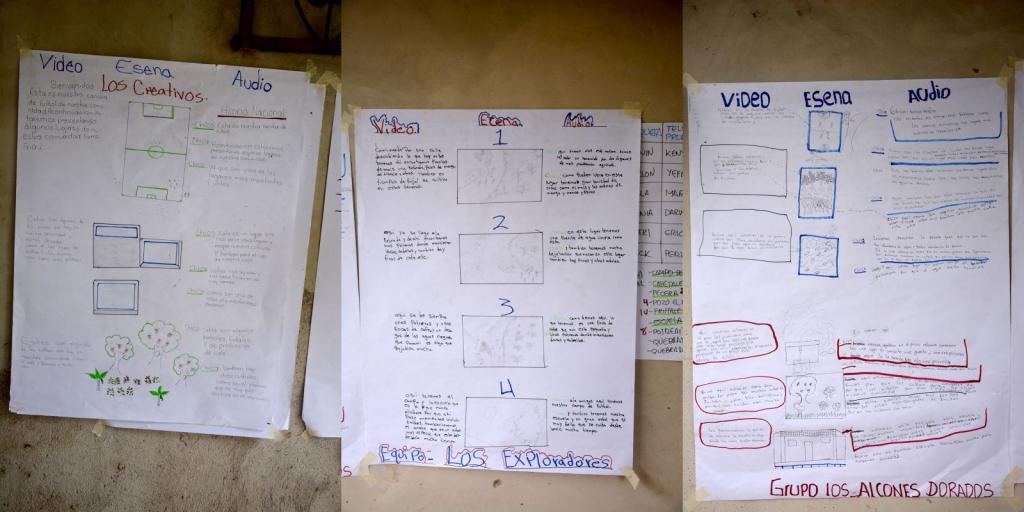
These are the scripts proposed by the working groups. Photo: J. L. Urrea (CCAFS)
At first, it was a little bit complicated for us to make the video, because we were nervous to be on camera, we had glitches or the kids around the plot made noise during the recording. But then we found trust and finished all the shots that we planned to do. In fact we had time to record a little more, but the rain would not let us continue. The result is a video made by ourselves, which we think is pretty good for be our first try and we are proud of it:
The training ended with a talk about what climate change is, how it affects us and what we can do to face it. We learned a lot about the importance of forests to human life and also about the problems caused by global warming, their impact on agriculture and how important it is to adapt.
We, as the new generation, are becoming more aware that we have to take care of our planet, and in this workshop we learned not only how to take pictures and videos, but also we committed ourselves to put into practice what was learned and share it with other members of our community; because Tierra Fria is our Climate-Smart Village!
Darwin Mejía is a young local reporter for Santa Rita CSV, and participated in the training workshop on climate change and communication tools, held from 13 to 15 March 2017.

